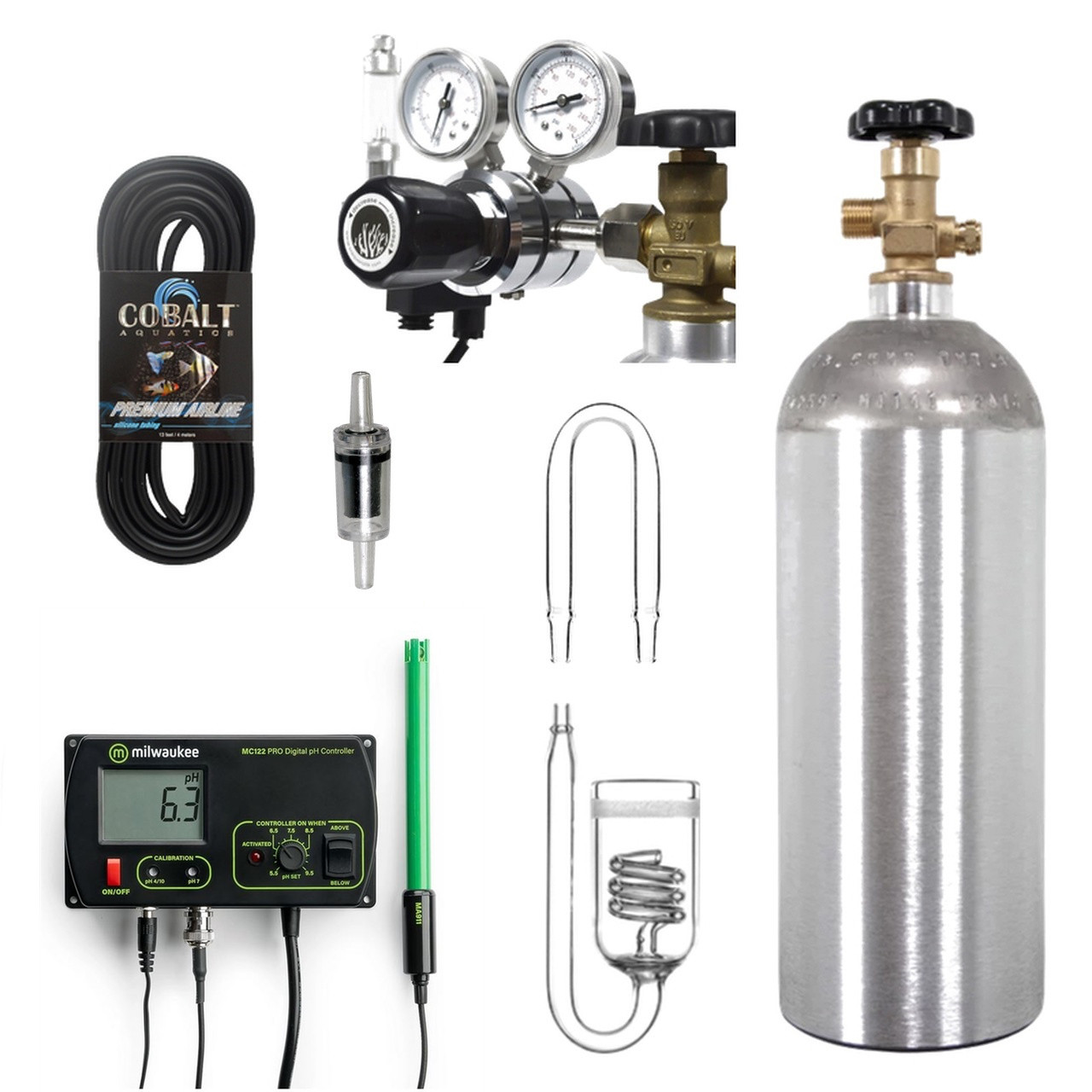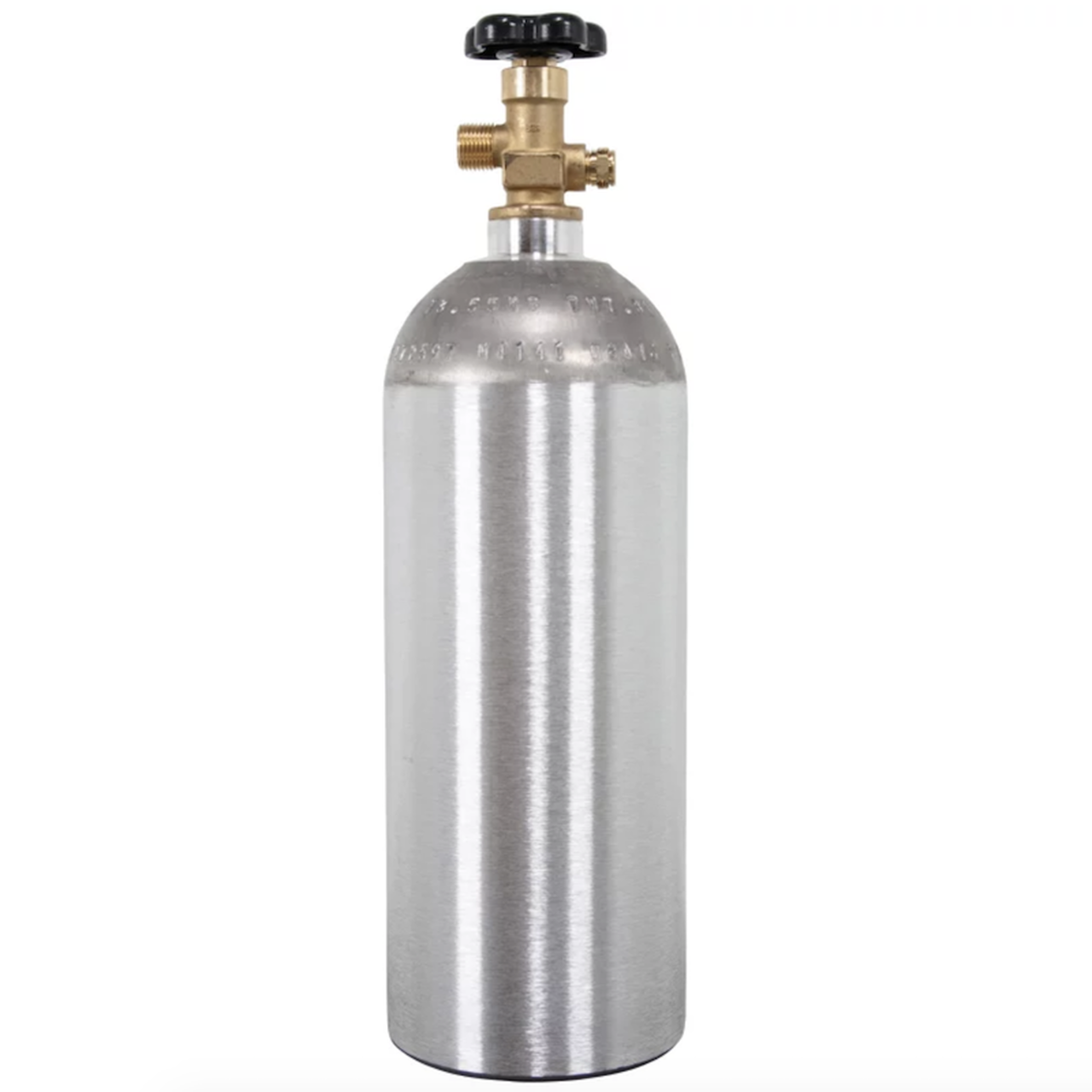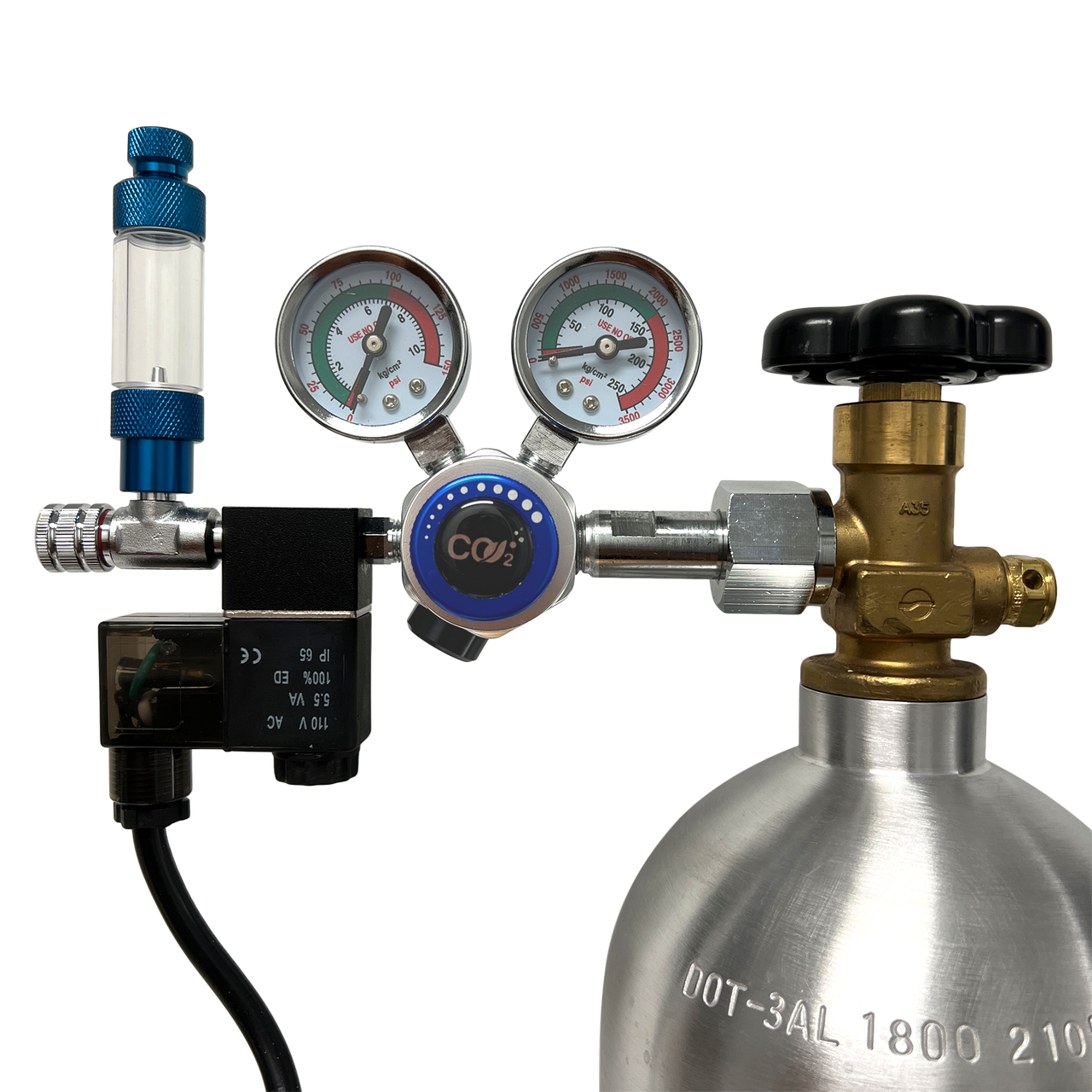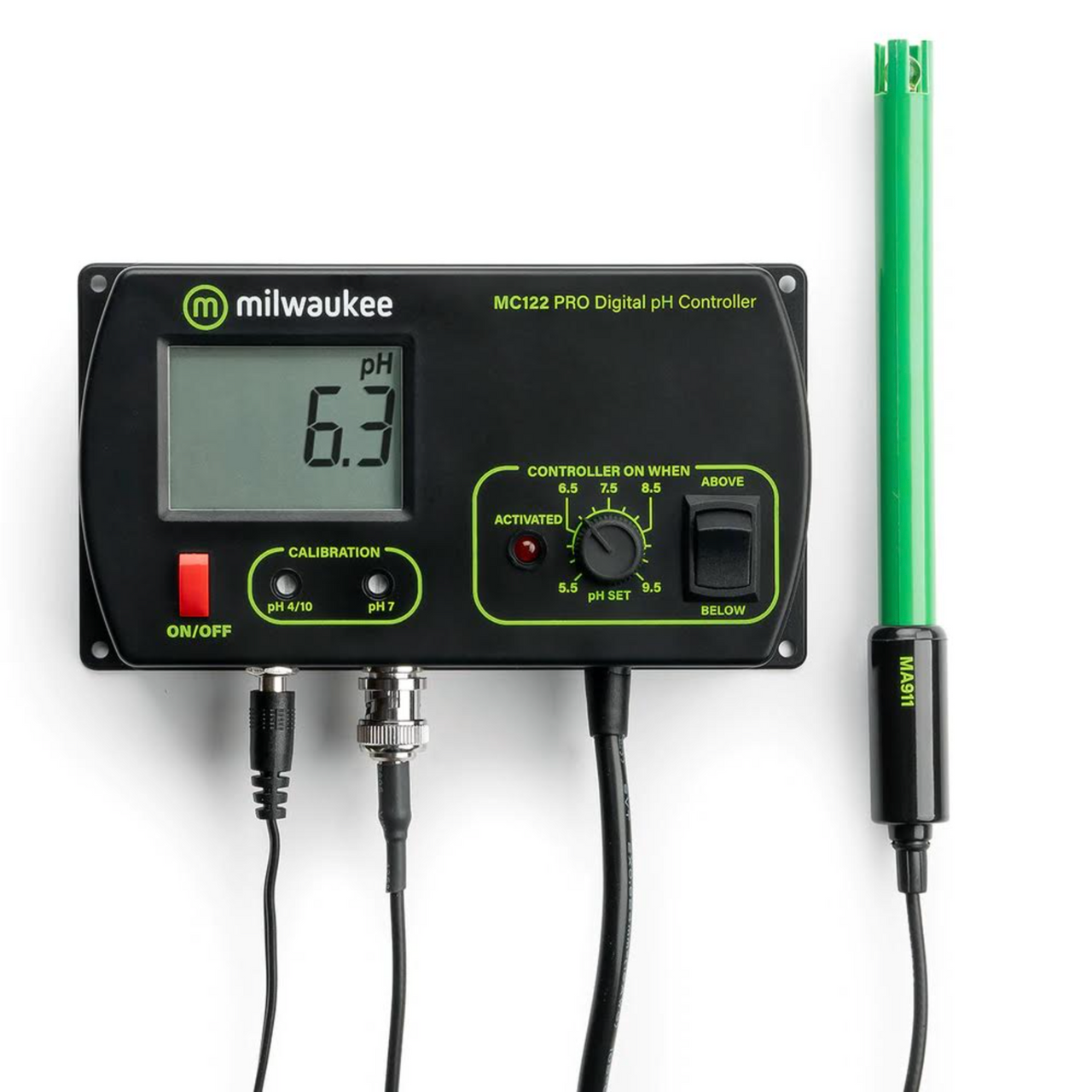Getting and Setting Up High-Tech CO2 System for Your Planted Aquarium: Comprehensive Step-by-step Guide for Beginners.
Posted by Artur M. Wlazlo on 11 Jan 2024
Why is CO2 so important to the aquatic plants?
Generally, you can divide planted aquariums into two broad categories: low-tech and high-tech planted tanks. Low-tech planted tanks do not rely on technology to supplement CO2 to the plants while high-tech aquariums do. A high-tech setup is unnecessary to grow and maintain aquatic plants in glass boxes successfully. However, it is also indisputable that a CO2 injection will make growing and keeping aquatic plants easier and, importantly too, will expand your ability to cultivate even the most demanding aquarium plants.
Why does the CO2 injection make such a difference? Carbon dioxide (CO2) is the most important nutrient to both terrestrial and aquatic plants. CO2 is abundantly available in the air but unfortunately not underwater. Consequently, the availability of CO2 to aquatic plants is the biggest limiting factor to their growth potential, even if all other nutrients are available.
The easiest and most efficient way to supplement CO2 is through a pressurized CO2 bottle. Many hobbyists decide against high-tech pressurized CO2 setups, viewing them as daunting, complicated, and even intimidating. In this blog, we are going to dispel these myths and demonstrate that high-tech pressurized CO2 systems are anything but once you have a working knowledge of the various components. In fact, CO2 systems for planted aquariums make growing and maintaining planted aquariums easier and satisfying results more easily achievable.
Below is the breakdown of the various components of the high-tech CO2 system, an explanation of how they work, what their roles are, and how they integrate:
1. Compressed/Pressurized CO2 Bottle
A CO2 bottle or cylinder is designed to hold liquid CO2 under pressure so it can be introduced to an aquarium. When the liquid CO2 pressure is released, the liquid CO2 converts into gas and can then be introduced into an aquarium. These bottles are usually made from stainless steel or aluminum and come in different sizes. Importantly, as those available in our online store are, they should be certified safe.
Generally, when you purchase your CO2 system, the bottle you will receive will be empty. You can take the empty bottle to several places like welding stores, brewery supply stores, paintball stores, some gas stations, and/or hardware stores will either fill your bottle or swap it for one already full. When full or in use, please keep your bottle vertical to prevent the liquid from coming out.
2. CO2 Regulator with Solenoid and Bubble Counter
A CO2 Regulator with an integrated solenoid is attached to the CO2 bottle. The role of the CO2 Regulator is to allow CO2 gas to escape the CO2 bottle in a controlled manner. CO2 Regulators typically have two gauges. The one on the right typically indicates the pressure or how much CO2 is in the bottle and the second one – typically located on the left – shows working pressure or how much is allowed to flow.
Then, there are single and dual-stage CO2 regulators. Dual-stage regulators are more expensive but also much better at regulating the release of CO2 especially when the CO2 bottle is about to run out of CO2, requiring much less adjustment. Single-stage regulators tend to expel most of the remaining CO2 when the pressure in the CO2 bottle reaches a certain low point. Dual-stage regulators prevent that from happening and, for your peace of mind, we recommend spending a little bit extra and getting a dual-stage regulator.
The regulator is screwed onto the CO2 bottle. You should wrap the threads on the bottle with a Teflon or similar tape and make sure to insert a washer that either came with the regulator or the bottle before screwing it tightly using a wrench (if lost, a washer can be obtained from the place where you will fill or swap your bottle).
Our regulator comes with an integrated solenoid. The solenoid assembly looks like a small black box that is already attached to the regulator. The solenoid is powered by the attached electrical cord. Its job is to turn on (release) and turn off (shut off) the flow of CO2 into your aquarium. When the solenoid opens, you may hear a click, indicating that the solenoid valve is now open and allowing the flow of CO2.
At the end of the Solenoid assembly is a bubble counter with a needle valve. It is a small cylinder – either glass or acrylic - which allows you to observe the CO2 bubbles escaping from the CO2 bubble and make precise adjustments to the flow of the CO2. To view the bubbles, the bubble counter cylinder needs to be filled with a liquid. There are some specialty and proprietary liquids available for this purpose, but many hobbyists simply use mineral oil, vegetable oil, and even water to fill the bubble counter cylinder.
3. CO2 Diffuser and Tubing
Aquarium tubing is attached to the top of the bubble counter cylinder. Regular airline tubing is acceptable. Before attaching a CO2 diffuser to the other end of the tubing, we recommend installing a check valve to prevent your aquarium water from backflowing when the solenoid shuts off the flow of the CO2 gas. CO2 diffusers are available in different shapes and sizes, but they are all designed to produce very fine CO2 gas bubbles so that they dissolve in water more efficiently.
4. Digital pH & CO2 Controller
When CO2 is dissolved in water, its acidic properties cause a drop in pH levels. The more CO2 in the water, the lower the pH. To ensure appropriate levels of CO2 and guard against large, uncontrolled, sudden, and unhealthy drops in pH levels, fully automated CO2 systems utilize a digital pH & CO2 controller.
Digital pH & CO2 Controller comes equipped with a pH probe to measure the pH levels of your aquarium’s water. It is the one piece of equipment that makes the CO2 System truly autonomous. The CO2 Regulator with Solenoid and Bubble Counter is plugged into the controller and draws electric power from it. When a set pH level is reached, the pH & CO2 Controller cuts off the power to the CO2 Regulator with Solenoid and Bubble Counter, causing the solenoid to shut off the flow of CO2.
Operating High-Tech CO2 System
Once you know your aquarium water’s “natural” pH you can then set a low point for your pH & CO2 Controller at which the power to the solenoid will be cut off and CO2 flow terminated. As an example, if your tank’s water pH is normally at 7, you can set the low point for your pH at 6.5. The CO2 will be diffused into the aquarium until the tank’s pH drops to 6.5. When the pH & CO2 Controller reads a pH of 6.5, it will shut off power to the CO2 Regulator with Solenoid and the flow of CO2 will be stopped. As time passes and the plants consume CO2, the pH level in the aquarium will begin to rise. When the tank’s pH rises above 6.5, the pH & CO2 Controller will turn on the power to the CO2 Regulator with Solenoid, and the CO2 will flow to the aquarium once again.
While at first blush setting up a high-tech CO2 system for your aquarium may appear complicated, it truly does not need to be, and once you understand how the different components work, the setup is straightforward. Injection of CO2 will boost plant growth and make it much easier to grow even difficult aquatic plants. And we hope that this comprehensive step-by-step guide will help explore that option for your aquarium.





